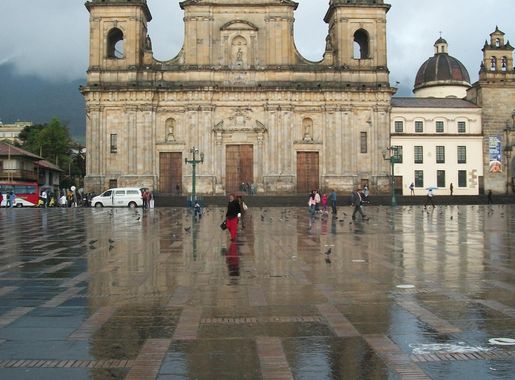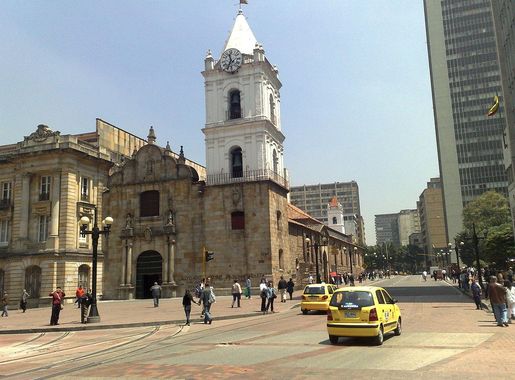
La Candelaria: The Historical Heart of Bogotá
Discover La Candelaria, Bogotá's historical heart, where colonial charm, vibrant street art, and rich cultural heritage come together to create an unforgettable experience.
La Candelaria is the beating heart of Bogotá, a neighborhood where history meets modern vibrancy. This area is a must-visit for any tourist seeking to immerse themselves in the rich culture and history of Colombia's capital. Strolling through its narrow, cobblestone streets, you'll encounter beautifully preserved colonial buildings, colorful murals, and an array of museums that tell the story of the city and its people. The neighborhood is home to some of Bogotá's most iconic landmarks. Plaza Bolívar, the main square, is surrounded by significant buildings such as the Primary Cathedral of Bogotá, the Palace of Justice, and the Capitol Building. A short walk away, you'll find the Botero Museum, which houses a significant collection of works by the famous Colombian artist Fernando Botero, as well as pieces by Picasso and Monet. The nearby Gold Museum offers a fascinating glimpse into Colombia's pre-Hispanic past with its extensive collection of gold artifacts. La Candelaria is not just about history; it's also a hub for contemporary culture. The area is filled with trendy cafes, bars, and restaurants where you can sample traditional Colombian dishes and coffee. Street performers and artists add to the lively atmosphere, making it a vibrant place to explore both day and night. Whether you're a history buff, an art lover, or simply looking to soak up the local culture, La Candelaria offers an unforgettable experience.
Local tips in La Candelaria
- Wear comfortable shoes for walking on cobblestone streets.
- Visit the museums early in the day to avoid crowds.
- Sample local delicacies like ajiaco and tamales at neighborhood eateries.
- Keep an eye on your belongings, as pickpocketing can occur in crowded areas.
- Take a guided tour for deeper insights into the neighborhood's history and culture.
La Candelaria: The Historical Heart of Bogotá
La Candelaria is the beating heart of Bogotá, a neighborhood where history meets modern vibrancy. This area is a must-visit for any tourist seeking to immerse themselves in the rich culture and history of Colombia's capital. Strolling through its narrow, cobblestone streets, you'll encounter beautifully preserved colonial buildings, colorful murals, and an array of museums that tell the story of the city and its people. The neighborhood is home to some of Bogotá's most iconic landmarks. Plaza Bolívar, the main square, is surrounded by significant buildings such as the Primary Cathedral of Bogotá, the Palace of Justice, and the Capitol Building. A short walk away, you'll find the Botero Museum, which houses a significant collection of works by the famous Colombian artist Fernando Botero, as well as pieces by Picasso and Monet. The nearby Gold Museum offers a fascinating glimpse into Colombia's pre-Hispanic past with its extensive collection of gold artifacts. La Candelaria is not just about history; it's also a hub for contemporary culture. The area is filled with trendy cafes, bars, and restaurants where you can sample traditional Colombian dishes and coffee. Street performers and artists add to the lively atmosphere, making it a vibrant place to explore both day and night. Whether you're a history buff, an art lover, or simply looking to soak up the local culture, La Candelaria offers an unforgettable experience.
Iconic landmarks you can’t miss
Plazoleta Chorro de Quevedo
Explore Plazoleta Chorro de Quevedo, Bogotá's historical square, brimming with culture, artistry, and the essence of Colombia's vibrant capital.

Iglesia de Nuestra Señora de la Candelaria
Explore the captivating beauty and rich history of the Iglesia de Nuestra Señora de la Candelaria, a stunning baroque church in Bogotá's La Candelaria district.
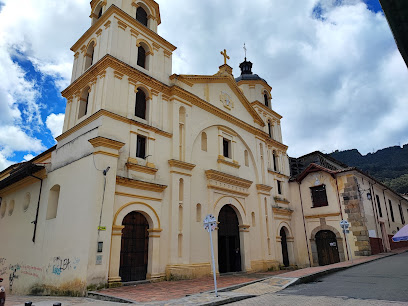
Parque La Candelaria
Experience the vibrant atmosphere of Parque La Candelaria, a beautiful urban park in Bogotá surrounded by culture, art, and history.
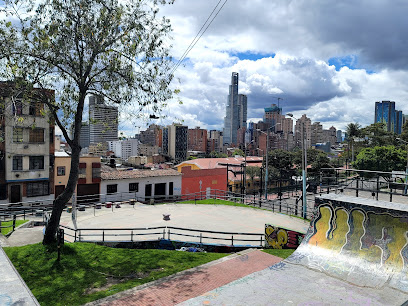
La Candelaria
Explore La Candelaria, Bogotá's historic district, where colonial charm meets vibrant culture and rich history in every corner.
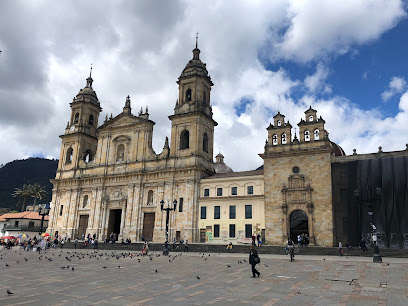
La Pola - Policarpa Salavarrieta Monument
Explore La Pola, the iconic monument dedicated to Colombia's national heroine, Policarpa Salavarrieta, in the historic heart of Bogotá's La Candelaria district.
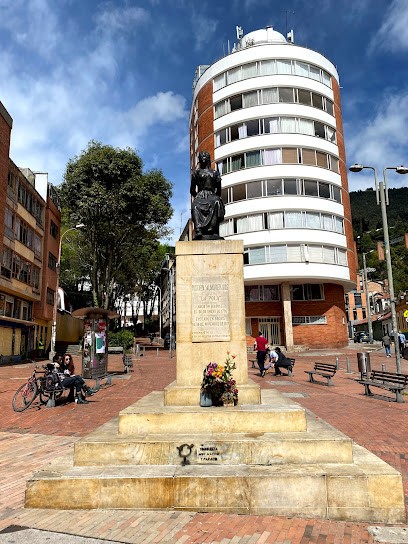
Ghost Street
Explore Ghost Street in Bogotá, a historical landmark rich in culture, stunning architecture, and vibrant local life, perfect for every traveler.
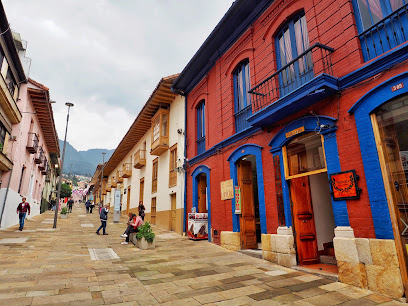
STREET DOG FACE
Experience the artistic spirit and cultural richness of Bogotá at STREET DOG FACE, a captivating historical landmark in La Candelaria.
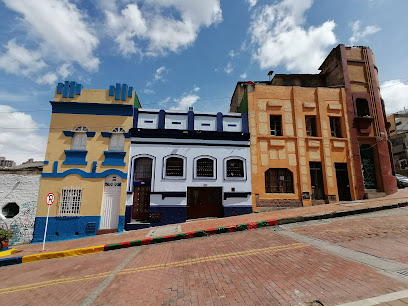
Pasaje peatonal Calle 11 de la Candelaria
Explore the vibrant Pasaje Peatonal Calle 11 de la Candelaria, a historic pedestrian passage in Bogotá filled with culture, shops, and local cuisine.

Bogotá
Discover La Candelaria, Bogotá's historic district, rich in culture, art, and colonial charm, perfect for an immersive travel experience.
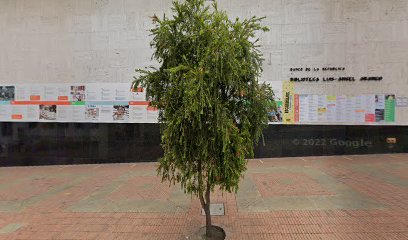
Calle de la Candelaria
Explore Calle de la Candelaria, Bogotá's historical treasure with stunning architecture and vibrant cultural experiences.
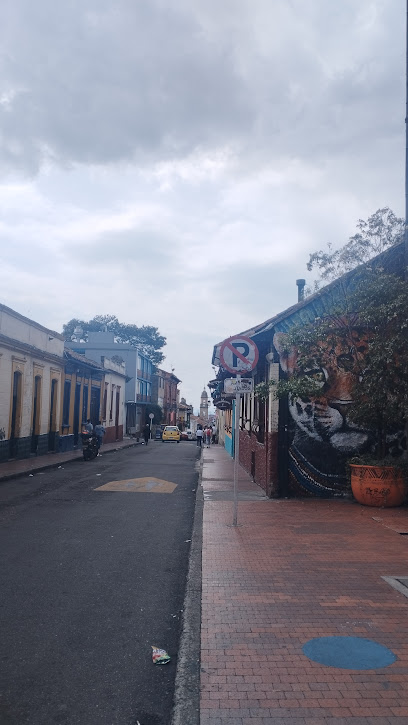
Unmissable attractions to see
Plazoleta Chorro de Quevedo
Discover the cultural heartbeat of Bogotá at Plazoleta Chorro de Quevedo, where history and vibrant local life intertwine.
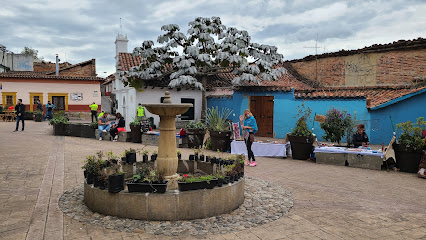
Museo Quinta de Bolívar
Explore the life of Simón Bolívar at Museo Quinta de Bolívar, a historical gem in Bogotá showcasing Colombia's rich heritage.
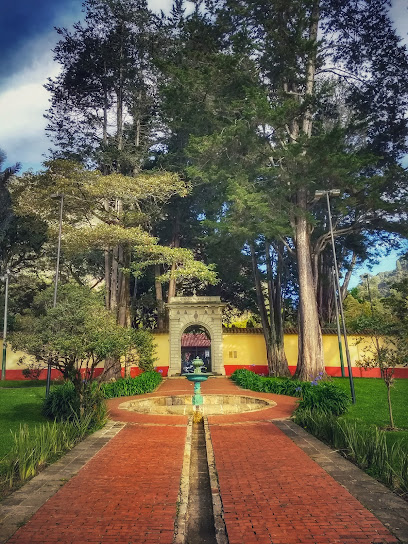
Museo Santa Clara
Explore the captivating history of Colombia at Museo Santa Clara, a beautifully preserved museum in Bogotá showcasing colonial art and artifacts.
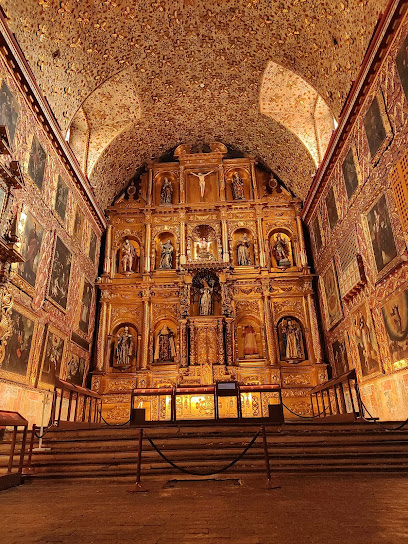
Parque La Candelaria
Explore the serene beauty and cultural vibrancy of Parque La Candelaria, a must-visit park in Bogotá's historic La Candelaria district.
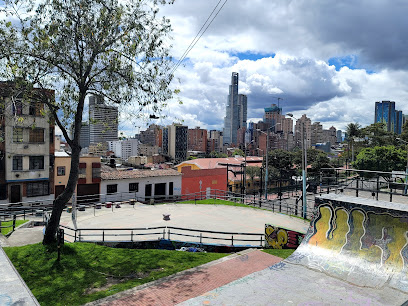
La Candelaria
Explore the vibrant streets of La Candelaria, Bogotá's historic heart, filled with art, culture, and colonial charm.
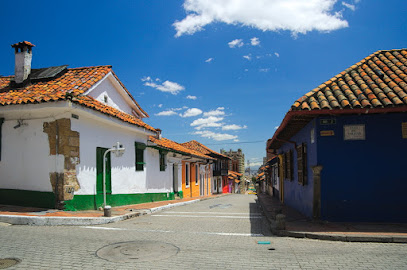
Trams in Bogotá
Explore the historic charm of Bogotá aboard its iconic trams, a unique and scenic way to discover Colombia's vibrant capital.
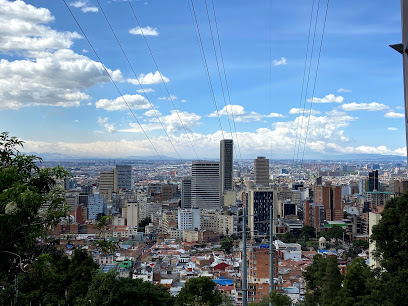
Walking tour bogota by (The True Colombian Experience)
Explore Bogotá like a local with an immersive walking tour that reveals the city's history, culture, and vibrant street life.
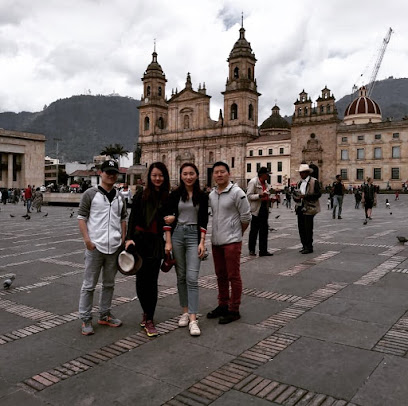
STREET DOG FACE
Explore the vibrant Street Dog Face in La Candelaria, Bogotá, where history meets urban artistry in a lively cultural experience.
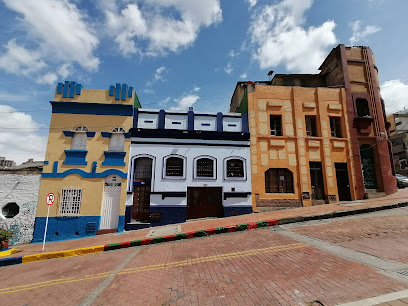
Estatua de Simón Bolívar
Explore the Estatua de Simón Bolívar, a significant historical monument in Bogotá that celebrates the spirit of freedom and the legacy of a legendary liberator.
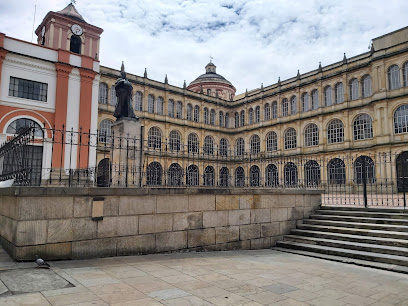
Essential places to dine
El Gato Gris
Discover the vibrant flavors of Colombia at El Gato Gris—an artistic restaurant-bar in La Candelaria perfect for foodies and socializers alike.
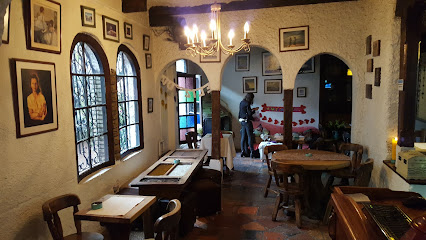
La Puerta Falsa Restaurant
Experience authentic Colombian flavors at La Puerta Falsa Restaurant in Bogotá’s historic La Candelaria district.
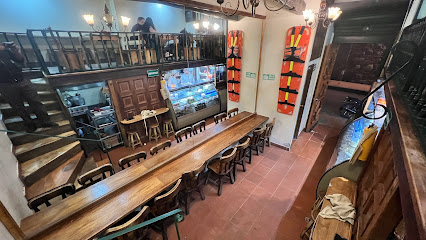
La PUERTA de la CATEDRAL
Experience authentic Colombian flavors at La PUERTA de la CATEDRAL in Bogotá's historic La Candelaria district.
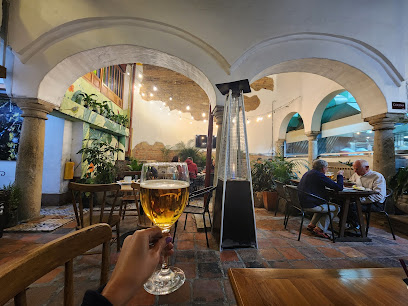
T BONE
Discover Bogotá's finest chophouse at T BONE - where quality meats meet Colombian hospitality in the heart of La Candelaria.
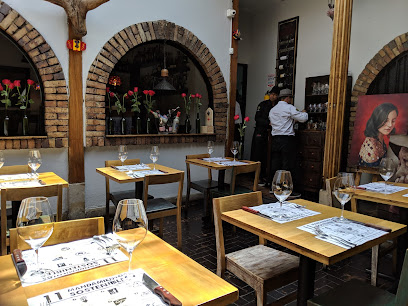
La Bruja
Discover La Bruja: A fine dining restaurant in Bogotá offering innovative continental cuisine and interactive drink experiences.
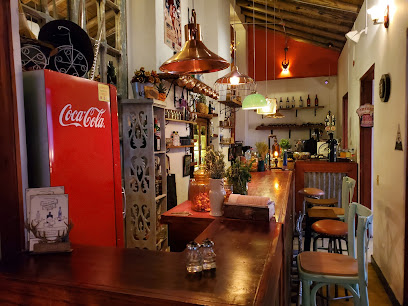
Origen Bistro
Discover the essence of Colombian cuisine at Origen Bistro in Bogotá's historical district, where tradition meets modern culinary artistry.
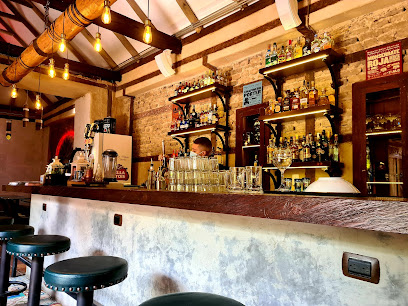
Restaurante El Son de los Grillos
Experience Bogotá's rich culinary scene at Restaurante El Son de los Grillos – where tradition meets flavor in every dish.
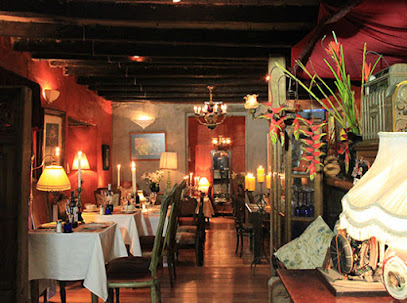
Capital cocina y café
Experience authentic Colombian cuisine at Capital Cocina y Café in Bogotá's historic La Candelaria district.
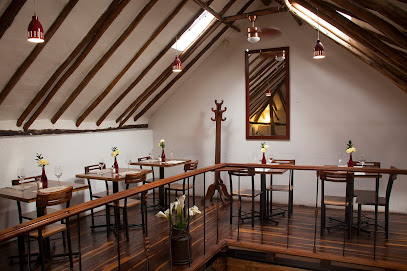
Sanalejo Cafe Bar Restaurante
Experience the perfect blend of art and cuisine at Sanalejo Cafe Bar Restaurante in La Candelaria, Bogotá – where every meal tells a story.
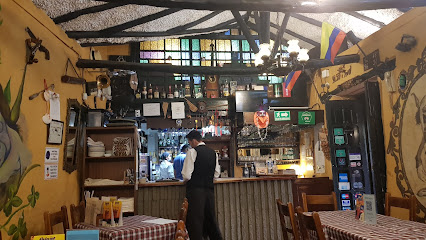
Restaurante La Scala
Experience authentic Italian and Mediterranean flavors at Restaurante La Scala in Bogotá's vibrant La Candelaria district.
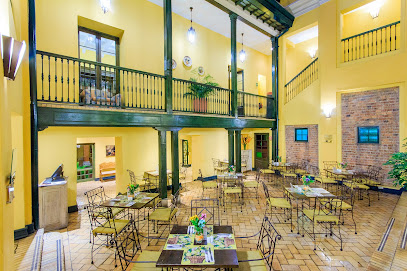
Markets, malls and hidden boutiques
Calle Real De La Candelaria Shopping Mall
Explore the bustling Calle Real De La Candelaria Shopping Mall in Bogotá, a vibrant shopping hub with local charm and delightful dining options.
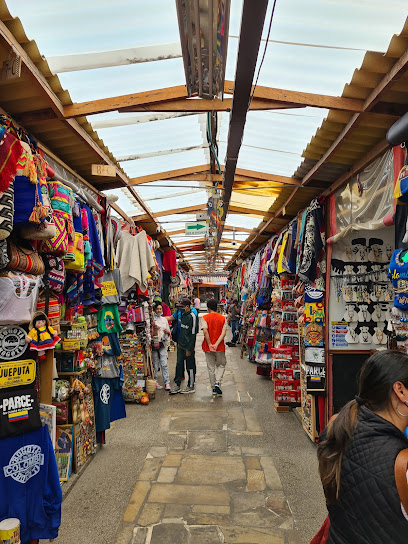
Centro De Bogota
Discover the lively shopping scene and rich cultural heritage of Centro De Bogota, the heart of Colombia's vibrant capital.

Artesanías y Esmeraldas Colombianas Doris Ortiz
Explore the heart of Colombian craftsmanship at Artesanías y Esmeraldas Colombianas Doris Ortiz, your gateway to authentic souvenirs and stunning emeralds.
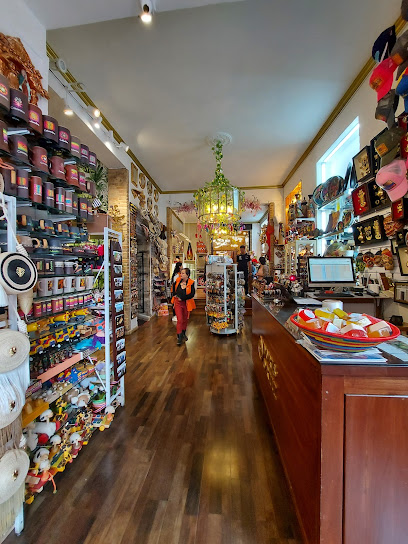
Solar Arts&Crafts
Explore the vibrant artistry of Colombia at Solar Arts&Crafts, where unique gifts and handicrafts await in the heart of Bogotá's La Candelaria.
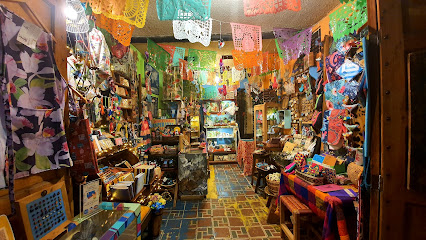
Memorias Colombia
Explore Memorias Colombia in La Candelaria, where art, literature, and authentic Colombian handicrafts come together for an unforgettable shopping experience.
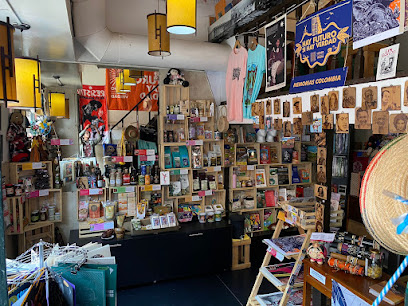
La Casa De Las Muñecas - Tienda vintage - Crochet - Herbolaria
Explore La Casa De Las Muñecas in Bogotá for vintage fashion, artisanal knitwear, and organic products in a charming atmosphere.
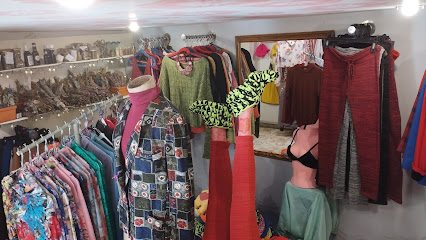
TELONIUS COLOMBIAN ART, souvenirs gift shop handicrafts
Explore a captivating array of handcrafted souvenirs and Colombian coffee at Telonius Colombian Art in Bogotá's vibrant La Candelaria.
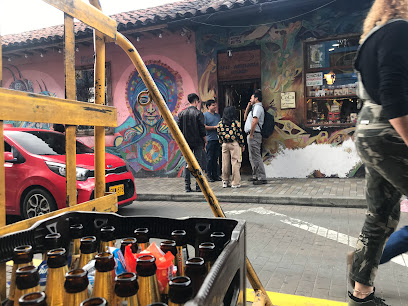
Zm import candelaria
Explore the heart of Bogotá with unique gifts and local crafts at Zm Import Candelaria, your destination for authentic Colombian souvenirs.
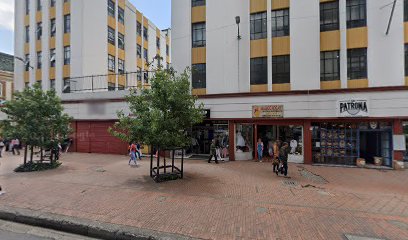
Artesanías kankiwas
Explore the heart of Colombian culture at Artesanías Kankiwas, your go-to gift shop in La Candelaria, Bogotá for unique artisan treasures.
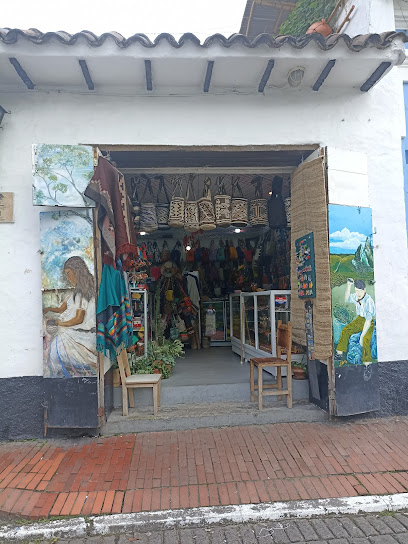
Tienda El Estante
Explore authentic Colombian handicrafts at Tienda El Estante in La Candelaria, a unique gift shop showcasing local artisans' creativity.
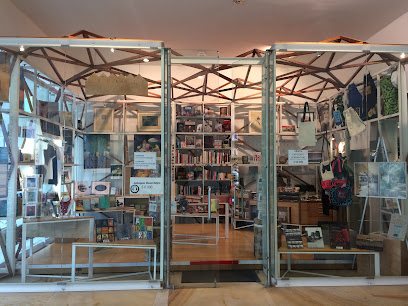
Essential bars & hidden hideouts
El Irish Pub
Experience the heart of Irish culture in Bogotá at El Irish Pub, where great food, drinks, and friendship come together.
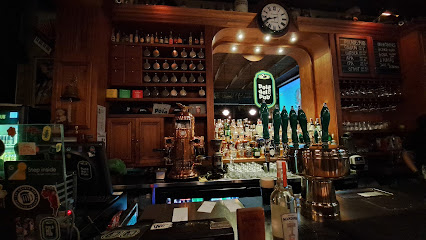
Bogota Beer Company
Discover the best of Colombia's craft beer scene at Bogotá Beer Company, where culture meets flavor in a vibrant pub atmosphere.
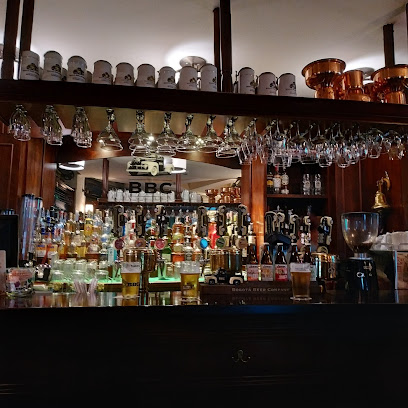
Bellagio Bar
Discover the lively ambiance and exceptional drink selection at Bellagio Bar, a top nightlife destination in Bogotá's La Candelaria.
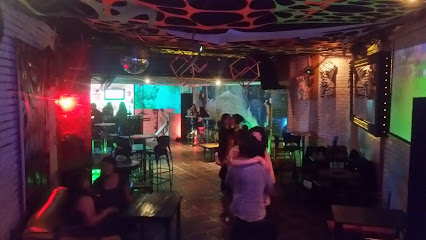
The Doors Rock Bar
Experience the electrifying atmosphere of The Doors Rock Bar, a top nightlife destination in Bogotá, where rock music meets a lively ambiance.
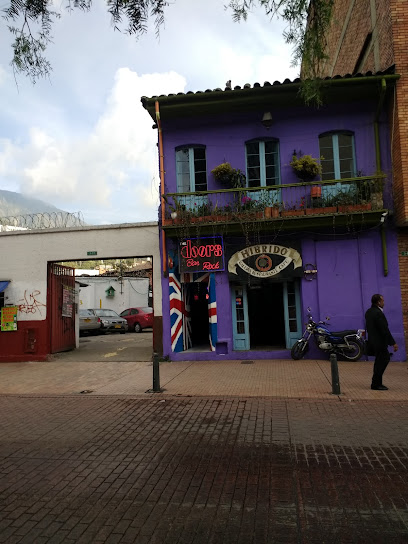
Pub Bar Capital
Discover the vibrant nightlife of Bogotá at Pub Bar Capital, a lively bar offering a mix of local and international drinks in a friendly atmosphere.
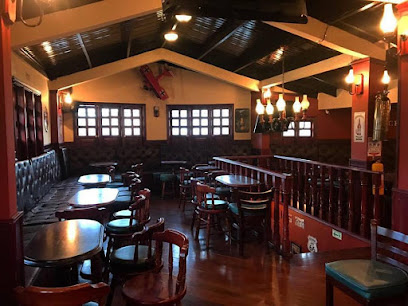
Bullitas Del Callejón
Bullitas Del Callejón: A lively bar in Bogotá's La Candelaria, offering a cozy atmosphere and an array of drinks perfect for tourists and locals alike.
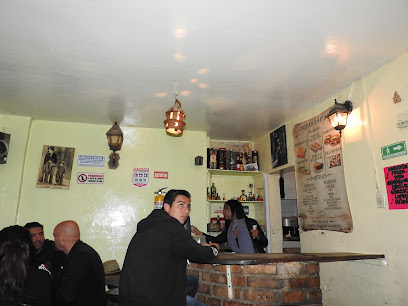
The wine Bar - El Bar de Vinos
Experience the essence of Colombian wine culture at The Wine Bar - El Bar de Vinos, a cozy and charming spot in Bogotá.
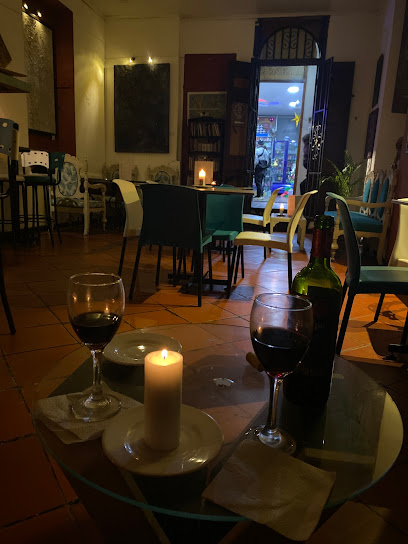
Sophi bar
Discover Sophi Bar, a vibrant gastropub in Bogotá's La Candelaria, where local flavors meet innovative cuisine in a lively atmosphere.
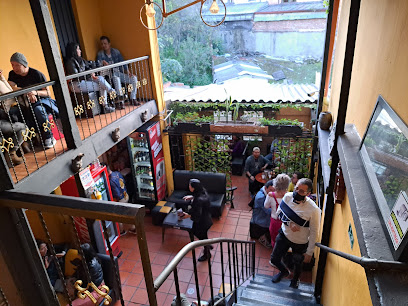
The Faculty Bar
Discover the vibrant atmosphere and unique drinks at The Faculty Bar in Bogotá, where local culture meets contemporary flair.
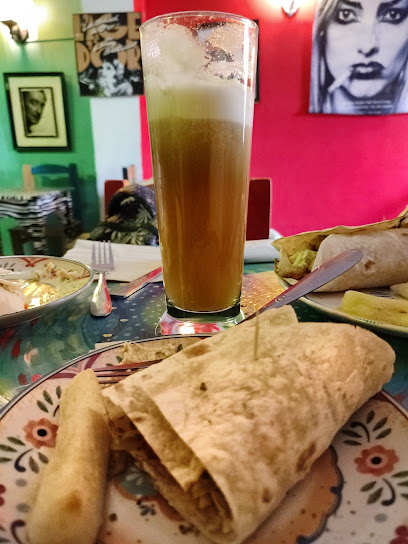
COCKTAILS TO GO!
Experience the vibrant nightlife of Bogotá at Cocktails to Go!, where local mixology meets a lively atmosphere perfect for travelers.
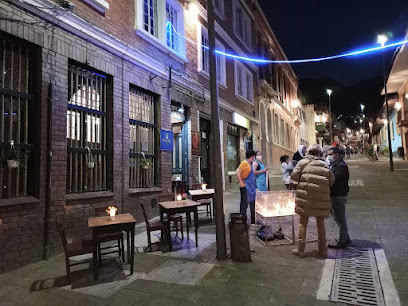
Local Phrases
-
- HelloHola
[oh-lah] - GoodbyeAdiós
[ah-dee-ohs] - YesSí
[see] - NoNo
[noh] - Please/You're welcomePor favor/De nada
[por fah-vor/deh nah-dah] - Thank youGracias
[grah-see-ahs] - Excuse me/SorryPerdón
[pehr-dohn] - How are you?¿Cómo estás?
[koh-moh ehs-tahs] - Fine. And you?Bien. ¿Y tú?
[byen. ee too] - Do you speak English?¿Hablas inglés?
[ah-blahs een-glehs] - I don't understandNo entiendo
[noh ehn-tee-ehn-doh]
- HelloHola
-
- I'd like to see the menu, pleaseMe gustaría ver el menú, por favor
[meh goos-tah-ree-ah behr ehl meh-noo, por fah-vor] - I don't eat meatNo como carne
[noh koh-moh kahr-neh] - Cheers!¡Salud!
[sah-lood] - I would like to pay, pleaseMe gustaría pagar, por favor
[meh goos-tah-ree-ah pah-gar, por fah-vor]
- I'd like to see the menu, pleaseMe gustaría ver el menú, por favor
-
- Help!¡Ayuda!
[ah-yoo-dah] - Go away!¡Vete!
[veh-teh] - Call the Police!¡Llama a la Policía!
[yah-mah ah lah poh-lee-see-ah] - Call a doctor!¡Llama a un médico!
[yah-mah ah oon meh-dee-koh] - I'm lostEstoy perdido
[ehs-toy pehr-dee-doh] - I'm illEstoy enfermo
[ehs-toy ehn-fehr-moh]
- Help!¡Ayuda!
-
- I'd like to buy...Me gustaría comprar...
[meh goos-tah-ree-ah kohm-prahr] - I'm just lookingSolo estoy mirando
[soh-loh ehs-toy mee-rahn-doh] - How much is it?¿Cuánto cuesta?
[kwan-toh kwehs-tah] - That's too expensiveEso es demasiado caro
[eh-soh ehs deh-mah-syah-doh kah-roh] - Can you lower the price?¿Puede bajar el precio?
[pweh-deh bah-hahr ehl pree-syoh]
- I'd like to buy...Me gustaría comprar...
-
- What time is it?¿Qué hora es?
[keh oh-rah ehs] - It's one o'clockEs la una
[ehs lah oo-nah] - Half past (10)Media (10)
[meh-dee-ah (deez)] - MorningMañana
[mah-nyah-nah] - AfternoonTarde
[tahr-deh] - EveningNoche
[noh-cheh] - YesterdayAyer
[ah-yehr] - TodayHoy
[oy] - TomorrowMañana
[mah-nyah-nah] - 1Uno
[oo-noh] - 2Dos
[dohs] - 3Tres
[trehs] - 4Cuatro
[kwah-troh] - 5Cinco
[seen-koh] - 6Seis
[says] - 7Siete
[syeh-teh] - 8Ocho
[oh-choh] - 9Nueve
[nweh-veh] - 10Diez
[dyehs]
- What time is it?¿Qué hora es?
-
- Where's a/the...?¿Dónde está...?
[dohn-deh ehs-tah] - What's the address?¿Cuál es la dirección?
[kwal ehs lah dee-rehk-syon] - Can you show me (on the map)?¿Puedes mostrarme (en el mapa)?
[pweh-dehs mohs-trar-meh (ehn ehl mah-pah)] - When's the next (bus)?¿Cuándo es el próximo (bus)?
[kwan-doh ehs ehl prok-see-moh (boos)] - A ticket (to ....)Un boleto (a ....)
[oon boh-leh-toh (ah)]
- Where's a/the...?¿Dónde está...?
History of La Candelaria
-
La Candelaria, the historical heart of Bogotá, was established in the early 16th century shortly after the Spanish conquest of the Muisca Confederation. The area was originally inhabited by the Muisca people, and in 1538, the Spanish explorer Gonzalo Jiménez de Quesada founded Bogotá, initially in this neighborhood. Its strategic location at a high altitude made it a desirable site for the new colonial city.
-
The 17th century marked a significant period for La Candelaria as it became a center for religious and cultural institutions. The construction of the first churches, such as the Iglesia de San Francisco and the Catedral Primada, began to shape the neighborhood's identity. The rich Baroque architecture and religious art from this period are evident in the many churches that dot the area.
-
During the early 19th century, La Candelaria played a crucial role in Colombia's struggle for independence from Spanish rule. Key events, such as the revolutionary meetings held at the Casa de la Moneda and the emergence of figures like Simón Bolívar, were pivotal in rallying support for the movement. The neighborhood became a hub for revolutionary ideas and gatherings.
-
As Bogotá evolved throughout the 19th century, La Candelaria underwent significant changes. The neighborhood became the political and cultural nucleus of the city, witnessing the construction of important buildings, such as the Capitolio Nacional and the Palacio de Justicia. These developments reflected Bogotá's growing aspirations as the capital of the newly formed Republic of Colombia.
-
In the 20th century, La Candelaria experienced a cultural renaissance. The establishment of universities, theaters, and art galleries contributed to a vibrant intellectual and artistic scene. The district became a magnet for artists, writers, and thinkers, with notable figures like the Colombian poet José Asunción Silva leaving their mark on the neighborhood.
-
In recent decades, La Candelaria has focused on preserving its unique cultural and historical heritage. Efforts to restore colonial buildings and promote tourism have transformed the neighborhood into a popular destination for both locals and international visitors. The streets are now lined with museums, cafes, and artisan shops, showcasing the rich tapestry of Bogotá's history and culture.
La Candelaria Essentials
-
La Candelaria is centrally located in Bogotá and is easily accessible from other neighborhoods. The TransMilenio bus rapid transit system has several stations nearby, including 'Museo del Oro' and 'Las Aguas.' For visitors arriving from El Dorado International Airport, taxis and ride-sharing services are the most convenient options, taking approximately 30-40 minutes depending on traffic. Alternatively, you can take a local bus from the airport to the city center and transfer to a TransMilenio route.
-
La Candelaria is a walkable neighborhood, making it ideal for exploring on foot. You can also use the TransMilenio system for longer distances within Bogotá. Bicycles can be rented from local shops or through the city's bike-sharing program, 'BiciBogotá.' During weekends, the area is pedestrian-friendly, allowing visitors to enjoy the vibrant street life without the interference of vehicular traffic.
-
While La Candelaria is generally safe for tourists during the day, it is advisable to remain cautious, especially at night. Areas such as around Parque de los Periodistas and the outskirts can experience higher crime rates. Always keep an eye on your belongings and avoid displaying valuables. It is recommended to stay within well-trafficked areas and use reputable transportation options.
-
In case of an emergency, dial 123 for police, fire, or medical assistance. The nearest hospitals are Hospital Universitario San Ignacio and Clínica del Country. Keep a list of emergency contacts readily available, and consider having travel insurance that covers medical emergencies. Local pharmacies are also available for minor health issues.
-
Fashion: Do dress comfortably and casually, but avoid overly revealing clothing, especially in religious sites. Religion: Do respect local customs; when visiting churches, cover your shoulders and knees. Public Transport: Do be polite and offer your seat to elderly passengers. Don't eat or drink on public transport. Greetings: Do greet locals with a friendly 'Hola' and a smile. Eating & Drinking: Do try local delicacies from street vendors and restaurants. Don't refuse food or drink offered to you, as it may be considered rude.
-
To experience La Candelaria like a local, visit the weekly artisan markets and small cafes where locals gather. Try a traditional 'ajiaco,' a Colombian soup, at a local eatery, and sample freshly brewed coffee from a nearby café. Engage with street performers and artists who contribute to the vibrant atmosphere of the neighborhood. Don't miss the chance to explore the many museums, including the Botero Museum and the Gold Museum, to gain insight into Colombian culture and history.



